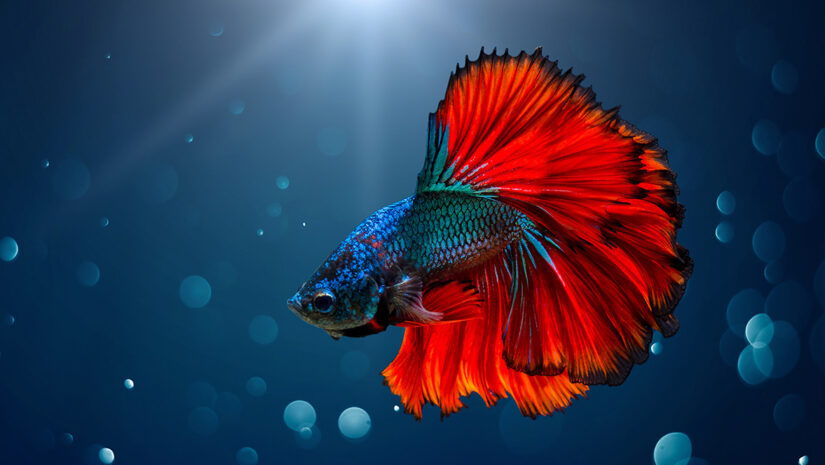While the world’s bodies of water are teeming with varied ecosystems, ocean plants, and marine life, no aquatic lifeform is quite as fascinating as the fish. Seemingly endless in their variety, size, and appearance, fish are some of the most remarkable creatures you’ll ever come across.
Many divers trace their fascination with marine life to childhood trips to aquariums, where they first encountered these curious creatures swimming gracefully in the water. Aside from being able to breathe underwater through their gills, fish can also sleep with their eyes open! Now, how’s that for a fascinating biological skill?
Outside their watery habitats, we encounter fish almost every day, served as mouthwatering dishes. But have you ever wondered if these creatures felt any pain before ending up on your dinner plate? Some scientists have studied the matter and have come up with some very interesting findings.
A Fish’s Basic Anatomy

Before we delve into the scientific findings, let’s first examine a fish’s basic anatomy to help us understand how they might react to painful stimuli.
- Fins – Used to propel their way forward, fish fins can be found on various parts of their body. Dorsal fins can be found on the fish’s back, whereas anal fins can be found near the tail, on the underside of the fish. Pectoral fins can be found on each side of the fish near its head, pelvic fins can be found on the underside near the head, and lastly, there’s the caudal fin, which is the fish’s tail.
- Internal Organs – Fish have a variety of internal organs, including intestines, kidneys, livers, and spleen.
- Skin and scales – Most fish have scales on top of their skin, which protects the internal organs from the outside elements.
- Air/Swim Bladder – This is one of a fish’s most unique parts. It helps control the fish’s buoyancy, allowing it to float higher or lower.
- Lateral Line – Used to avoid nearby predators, lateral lines are a series of tubes with a gummy secretion, which directs vibrations of low frequency and act as the fish’s ears.
- Nostrils – Similar to the nostrils found in mammals, fish use their nostrils to detect distant odors. They do not, however, use their nostrils to breathe.
While fish anatomy is clearly complex, scientists aren’t sure if fish have the cerebral complexity needed to experience pain the way mammals do.
Do Fish Feel Pain When Hooked? What the Experts Think

In his book, An Introduction to the Principles of Morals and Legislation, the English philosopher Jeremy Bentham argued that mankind’s most important consideration when it comes to the treatment of animals is to determine if they have the capacity to suffer. And since many scientists believe that fish lack the biological capacity to feel pain, there’s no reason to treat them humanely.
The writer and fisherman Ed Zern once argued that since fish have simpler nervous systems, he wasn’t sure if they felt any pain, and even if they did, they probably felt a simpler, less intense “fish pain”.
Many scientists are seeking to disprove these old-fashioned claims. They have done experiments with results that suggest that fish do, in fact, feel pain. One experiment involved the scientists dropping brightly colored Lego blocks inside a tank with rainbow trout. Normally, rainbow trout avoid unusual objects as a way of anticipating danger, but when subjected to a painful injection of acetic acid, the fish were less likely to exhibit those defensive behaviors. The rainbow trout seemed oblivious to the otherwise natural stimuli because they were distracted by the pain.
Scientists in the opposing camp have argued that these experiments are largely inconclusive because the fish’s behavioral reactions were evaluated according to human criteria. Echoing Zern’s sentiments, these scientists argue that fish lack the neuro-physiological capacity necessary for the conscious awareness of pain.
How Do Humans Experience Pain?
Whenever we get injured, nociceptors are stimulated and send electrical signals to the brain. Only when it reaches the neocortex in the brain does one experience the sensation of pain. This is what differentiates a conscious awareness of pain from an unconscious processing of impulses. Fish do not possess a neocortex, so it is highly unlikely that they feel pain like we do. Establishing a link between a fish’s behavioral responses and emotional states is also difficult.
Should We Care?

Compared to some of the most intelligent marine animals, do fish have the mental capacity to process and react to pain? Many biologists are now convinced that they do. In her seminal book, Do Fish Feel Pain? Biologist Victoria Braithwaite argued that “there is as much evidence that fish feel pain and suffer as there is for birds and mammals.”
When Braithwaite and her colleagues exposed fish to irritating chemicals, they reacted adversely: they beat their gills faster and rubbed the affected body parts against the side of the tank. According to PETA, researchers have identified at least 20 nociceptors in fish’s mouths and heads—including the areas where sharp hooks penetrate the flesh.
With so much mounting evidence, it’s pretty clear that fish squirm so much once they’re caught, not just because they’re suffocating but also because they’re in pain. Fishers who want to minimize the pain and suffering of fish should consider employing more humane ways of killing fish.





